Virginia is a state in the Mid-Atlantic and Southeastern regions of the United States between the Atlantic Coast and the Appalachian Mountains. This state hosts a wide range of wildlife ecosystems—from the Appalachian Mountains to the coastal plains.
The beauty of nature here also includes animals you want to avoid because they can pose risks to humans.
Hopefully, you haven’t had first-hand experience with some of these deathly creatures there. So, let’s discover, and learn about some of the fascinating, and dangerous animals.
Key Takeaway
- Be alert when in natural areas: Watch out for venomous snakes and ticks, so vigilance is crucial for safety
- Rare encounters with dangerous animals still could happen, so you should respect wildlife and know how to react when see them
8. Brown Recluse Spider (Violin Spider)
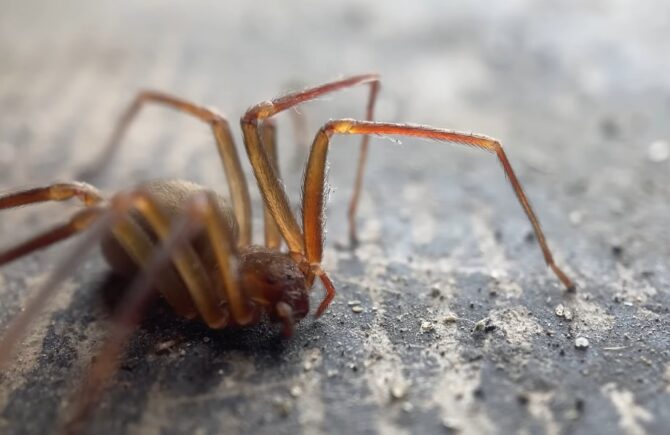
The brown recluse is a spider whose venomous bite may be medically significant to humans, though a bite is rarely fatal. The name “violin spider” describes a characteristic marking on the brown recluse: there is a violin-shaped patch on the broad, almost heart-shaped cephalothorax (the head, as opposed to the abdomen).
The overall color is usually a grayish yellow-brown, the oblong abdomen covered with fine gray hairs.
The legs are darker than the body and are long and slim. Females are larger than males.
The webs, associated with egg sacs, are small, irregular, and untidy. These spiders are usually seen walking or running around, not in the web.
Preventative measures include using tick repellent and conducting thorough checks after spending time in grassy or wooded areas.
7. Borrelia bacteria
One invisible enemy who lives in Virginia is Borrelia burgdorferi. A bacterial species of the spirochete class in the genus Borrelia, and is one of the causative agents of Lyme disease in humans. Their prevalence in Virginia makes it crucial for outdoor enthusiasts to take steps to protect themselves. A new Stanford
Medicine study in lab dishes and mice provides evidence that the drug azlocillin completely kills off the disease-causing bacteria Borrelia burgdorferi at the onset of the illness.
Most of the people who get Lyme disease and receive treatment early will be fine.
Treatment can cure Lyme disease but you might still have some long-term effects. Untreated Lyme disease may contribute to other serious problems but it’s rarely fatal.
6. Red Foxes

This fox is well known for its adaptability leading it to colonize a variety of habitats from tundra’s to deserts; often in Virginia they occur in forests, meadows, farms, and urban areas.
They prefer locations with mixed vegetation such as scrubland and the forest edge.
Red foxes, while less of a direct threat to humans, can carry diseases such as rabies.
Encounters are more common in suburban areas where foxes may come in search of food.
5. Wild Boars
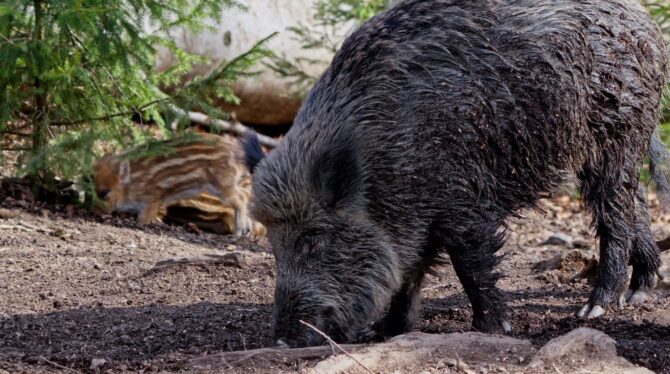
Feral hogs, wild boars or razorbacks; whatever you call them, these wild swine are one of the most destructive species in America.
They’re spreading across the country, including right here in Virginia, according to data from the University of Georgia Center for Invasive Species and Ecosystem Health’s Early Detection & Distribution Mapping System (EDDMapS).
They often make a terror, especially for farmers.
4. Ticks
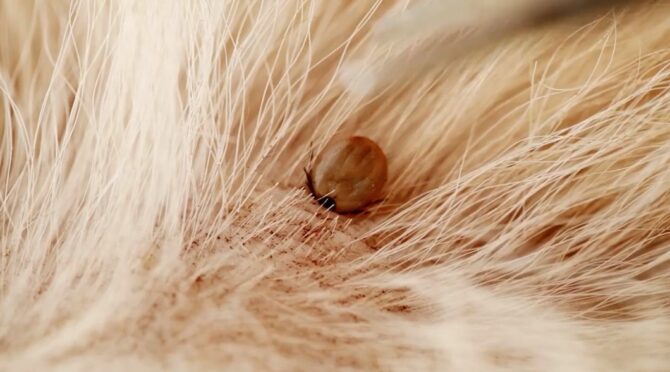
The American Dog Tick can be found throughout Virginia and can carry Rocky Mountain Spotted Fever, which affects humans and dogs.
The adult females (af) can be identified by their off-white patterned scutum (“shield” that is on their back), just behind their head, and the dark brown color of their body.
Preventative measures include using tick repellent and conducting thorough checks after spending time in grassy or wooded areas.
3. Black Bears
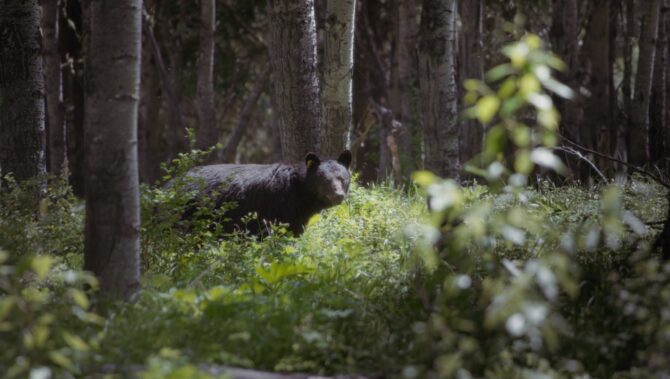
Of the three bear species (black, brown, and polar bears) in North America, only the black bear lives in Virginia. Shy and secretive, the sighting of a bear is a rare treat for most Virginians, but yet a potentially dangerous animal.
They are found throughout most of the Commonwealth, and encounters between bears and people are increasing. If you see a bear, enjoy watching from a distance.
If you come into close contact, back away slowly and remember that bears have a natural distrust of humans and will run when given a safe escape route.
If it is up a tree, leave it alone. Keep people and pets away from the tree to allow the bear to leave your property.
Proper disposal of food and trash is vital when camping or hiking in bear territories.
2. Snakes – The Eastern Copperhead and Eastern Cottonmouth
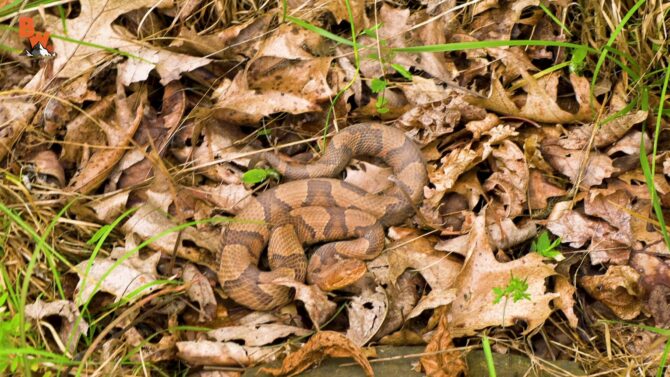
The Eastern Copperhead
This is a pit viper, as are all three of Virginia’s venomous snake species (Eastern Copperhead, Northern Cottonmouth and Timber Rattlesnake). This is the most venomous snake in North America.
It has a distinct coloration pattern consisting of dark diamond-shaped dorsal blotches defined by a border of yellowish scales.
These snakes are well known for their rattle and painful, venomous bite, which can be fatal to humans.
The toxin in their venom, called hemotoxin, kills red blood cells and causes tissue damage.
Eastern Cottonmouth
Also known as the water moccasin, the Eastern cottonmouth is a venomous snake found in Virginia’s wetlands and marshes.
Their aggressive reputation precedes them, but like most snakes, they prefer to avoid human interaction unless provoked.
As an adult, it is large and capable of delivering a painful and potentially fatal bite.
1. Sharks

Virginia’s coastal waters are inhabited by various shark species. While some sharks (Sandbar Shark, Smooth Dogfish or Atlantic Sharpnose Shark) are small or not a significant threat to humans, others species are.
Bull Sharks
Bull shark found in warm, shallow waters around the world, including coastal areas, rivers, and even lakes. They are a large and aggressive species of shark, and they are considered to be one of the most dangerous sharks in the world.
Bull shark is a dangerous animal, and they eat different sea animals, such as fishes, turtles, birds, and mammals.
They are also known to scavenge. Bull sharks are ovoviviparous, meaning that the eggs hatch inside the mother’s body and the young are born live.
The gestation period is about 12 months. They are listed as near threatened on the IUCN Red List.
So, stay dry, and you’re out of the menu!
Great white sharks

They are one of the most dangerous animals, and live off the coast of Virginia Beach. Great white sharks are apex predators and can grow up to 20 feet long and weigh up to 4,000 pounds.
Great white sharks are carnivores and their diet consists of marine mammals, such as seals, sea lions, and dolphins.
They also eat fish, such as tuna and swordfish.
Great white sharks are ovoviviparous, meaning that the eggs hatch inside the mother’s body and the young are born live. The gestation period is about 11 months, and the litter size is typically 2-14 pups.
Great white sharks are the most common dangerous animals in Virginia and listed as vulnerable on the IUCN Red List of Threatened Species.
The main threats to great white sharks are overfishing, habitat loss, and shark finning.
| Animal | Habitat | Risk to Humans |
|---|---|---|
| Brown Recluse Spider | Wooded areas, dark, secluded spaces | Venomous bite, medically significant |
| Eastern Copperhead | Forests, rocky areas | Venomous bite, requires medical attention |
| Black Bear | Forests, national parks | Potential for aggressive behavior if provoked |
| Wild Boars | Forests, farmlands | Aggressive behavior, environmental damage |
| Ticks | Grassy, wooded areas | Disease transmission (e.g., Lyme disease) |
| Bull Sharks | Coastal waters, rivers | Potential for bites, considered dangerous |
| Eastern Cottonmouth | Wetlands, marshes | Venomous bite, potentially fatal |
| Red Foxes | Forests, meadows, urban areas | Carriers of diseases like rabies |
| Great White Sharks | Coastal areas off Virginia Beach | Apex predators, potential for serious injuries |
Summary
Natural beauty always comes with the responsibility. In the wildlife, we share spaces with plenty of scary creatures.
From venomous snakes and ticks to majestic black bears and elusive sharks, being aware and prepared can ensure that your adventures are safe and enjoyable.
Try to be at a safe distance from these creatures to protect both yourself and the animals around you.






